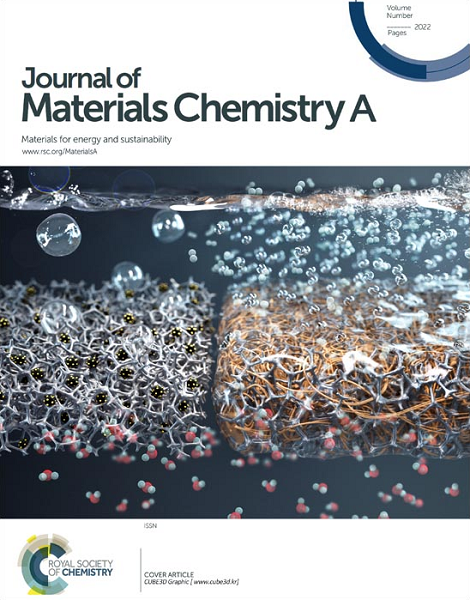Conformal Active Learning Aided Screening of Ligand Protected Cu-Nanoclusters for CO2 Reduction Reactions
IF 10.7
2区 材料科学
Q1 CHEMISTRY, PHYSICAL
引用次数: 0
Abstract
In this study, we have proposed a conformal active learning (CAL) method to screen the ligands protected atomically precise Cu-nanoclusters for CO2 reduction reaction. Here, we have investigated the roles of the core metals and the protecting ligands towards the product selectivity. We demonstrate here that such unique machine learning model can accurately accelerate the screening of nanoclusters where prediction uncertainty for unknown datasets can be calculated with rigorous coverage guarantee resulting reduced error and uncertainty (mean prediction interval) in the prediction of overall datasets. Thus, this model effectively balances the uncertainty, coverage guarantee and the prediction error for all the considered descriptors important for a catalytic reaction. Moreover, through feature importance analysis, we have determined the major influences from the considered features. Finally, screening through all the predicted results of each of the descriptors and putting some optimum criteria, we can screen out the best selective catalysts for C1 product formation. Such CAL-based method will certainly open a new direction in the field of high throughput screening of catalysts.用于二氧化碳还原反应的配体保护铜纳米簇的共形主动学习辅助筛选
在这项研究中,我们提出了一种保形主动学习(CAL)方法,用于筛选保护配体的原子精确铜纳米团簇,以用于二氧化碳还原反应。在此,我们研究了核心金属和保护配体对产物选择性的作用。我们在此证明,这种独特的机器学习模型可以准确地加速纳米簇的筛选,在此基础上,可以计算未知数据集的预测不确定性,并提供严格的覆盖保证,从而减少整体数据集预测的误差和不确定性(平均预测区间)。因此,该模型有效地平衡了不确定性、覆盖保证和对催化反应非常重要的所有描述符的预测误差。此外,通过特征重要性分析,我们确定了所考虑特征的主要影响因素。最后,通过对每个描述符的所有预测结果进行筛选,并设定一些最佳标准,我们可以筛选出 C1 产物形成的最佳选择性催化剂。这种基于 CAL 的方法必将为催化剂的高通量筛选领域开辟一个新的方向。
本文章由计算机程序翻译,如有差异,请以英文原文为准。
求助全文
约1分钟内获得全文
求助全文
来源期刊

Journal of Materials Chemistry A
CHEMISTRY, PHYSICAL-ENERGY & FUELS
CiteScore
19.50
自引率
5.00%
发文量
1892
审稿时长
1.5 months
期刊介绍:
The Journal of Materials Chemistry A, B & C covers a wide range of high-quality studies in the field of materials chemistry, with each section focusing on specific applications of the materials studied. Journal of Materials Chemistry A emphasizes applications in energy and sustainability, including topics such as artificial photosynthesis, batteries, and fuel cells. Journal of Materials Chemistry B focuses on applications in biology and medicine, while Journal of Materials Chemistry C covers applications in optical, magnetic, and electronic devices. Example topic areas within the scope of Journal of Materials Chemistry A include catalysis, green/sustainable materials, sensors, and water treatment, among others.
文献相关原料
| 公司名称 | 产品信息 | 采购帮参考价格 |
|---|
 求助内容:
求助内容: 应助结果提醒方式:
应助结果提醒方式:


